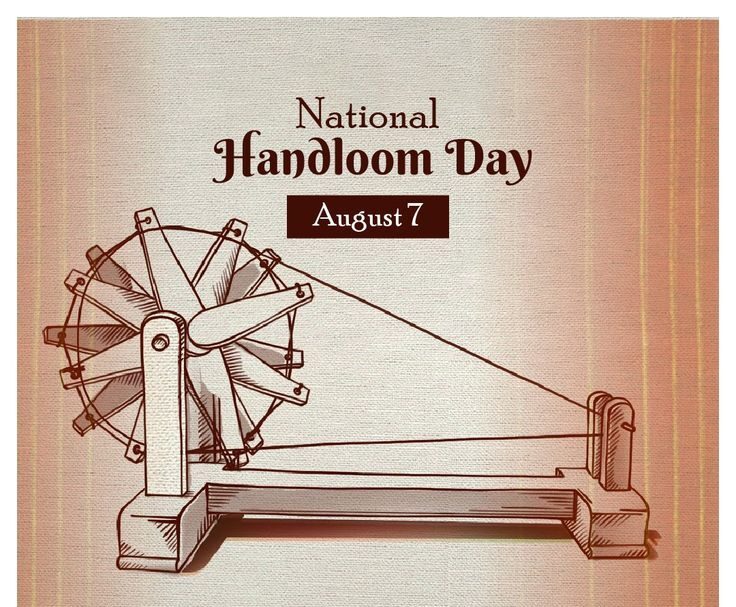🧵 7 Powerful Reasons Why National Handloom Day Deserves Unstoppable Respect
Every thread of a handloom fabric tells a story—not of machines, but of human spirit, heritage, and resilience. National Handloom Day, celebrated annually on August 7th, is a heartfelt tribute to the weavers and artisans of India, who spin the soul of the nation into every strand of cloth.
- 🧭 History of National Handloom Day
- 📜 Timeline of National Handloom Evolution
- 📊 Amazing Facts about Handloom in India
- 🌟 Significance of National Handloom Day
- 🎉 Observance & Celebration Activities
- 💌 Wishing Messages for National Handloom Day
- 🙋 Frequently Asked Questions (FAQs)
- Q1. Why is National Handloom Day celebrated on August 7?
- Q2. How does handloom benefit the environment?
- Q3. How many people work in India’s handloom sector?
- Q4. Is handloom different from power loom?
- Q5. Can handloom be modern and stylish?
- 📌 Key Points to Remember
- 🧶 Importance in Our Life and Society
- 🧭 Daily Life Impact of Handloom
- 🏁 Conclusion: A Fabric That Connects Generations
In this 1200+ word, human-friendly guide, we explore the rich history, facts, significance, and daily life impact of this day. Whether you’re a fashion lover, cultural enthusiast, or simply curious—this is your complete guide to why Handloom matters more than ever.
🧭 History of National Handloom Day
National Handloom Day was first observed in 2015, declared by the Government of India under the leadership of Prime Minister Narendra Modi. The date August 7th was chosen to commemorate the Swadeshi Movement of 1905, launched on this very day during the freedom struggle.
The Swadeshi Movement encouraged Indians to boycott foreign goods, especially British textiles, and revive indigenous industries like Khadi and Handloom. From the looms of Varanasi to the backyards of Kanchipuram, the spinning wheel became a symbol of self-reliance and nationalism.
📜 Timeline of National Handloom Evolution
| Year | Event |
|---|---|
| 1905 | Swadeshi Movement begins on August 7 |
| 1947 | Khadi becomes symbol of Indian freedom |
| 2015 | First National Handloom Day celebrated |
| 2016 | #IWearHandloom social movement launched |
| 2020 | Digital exhibitions and virtual weaver-meets due to COVID |
| 2024 | India’s handloom export rises 15% compared to 2023 |
📊 Amazing Facts about Handloom in India
India has the world’s largest handloom industry, employing over 43 lakh people.
Over 95% of the world’s handwoven fabric is produced in India.
Each handloom saree can take anywhere from 2 days to 2 months to make.
Weavers use no electricity in traditional handloom—it’s eco-friendly by design.
Handloom textiles include Banarasi, Pochampally, Kanjeevaram, Chanderi, Sambalpuri, and many more.
Handloom craft is passed down generationally, from grandmother to granddaughter.
The “GI Tag” (Geographical Indication) protects regional weaves like Bhagalpuri silk or Muga silk.
🌟 Significance of National Handloom Day
🧑🎨 A Salute to Artisans
It recognizes the skill, dedication, and cultural contribution of weavers, many of whom live in rural and economically backward areas.
🧺 Vocal for Local
Handloom Day supports the “Make in India” and “Atmanirbhar Bharat” (Self-Reliant India) campaigns by promoting local fabrics over foreign imports.
🏛️ Cultural Pride
Handloom isn’t just cloth; it’s living heritage—with roots in every Indian state and a place in temple rituals, marriages, and royal courts.
🌱 Sustainable Fashion
In an age of fast fashion and pollution, handloom is a sustainable, biodegradable, and ethical alternative.
💰 Economic Lifeline
By promoting handloom, we uplift marginalized communities, support women artisans, and preserve generations of tradition.
🎉 Observance & Celebration Activities
Weaver Melas: Exhibitions across India showcase regional weaves and provide direct platforms for artisans.
Design Contests: Students and designers create modern styles with traditional fabrics.
Government Honours: National awards like the Sant Kabir Award and National Handloom Awards are presented.
Social Media Movements: #IWearHandloom, #VocalForLocal, and #MyHandloomMyPride trend across platforms.
Celebrity Support: Public figures like Vidya Balan, Kangana Ranaut, and PM Modi promote handloom regularly.
💌 Wishing Messages for National Handloom Day
“Threads of tradition, strength, and pride—Happy National Handloom Day!”
“Wear your culture, support your artisans—celebrate Handloom with pride!”
“On this Handloom Day, let us honour those who weave dreams into threads.”
“Let’s go local, wear sustainable, and support the spirit of India. Happy Handloom Day!”
🙋 Frequently Asked Questions (FAQs)
Q1. Why is National Handloom Day celebrated on August 7?
Because August 7 marks the start of the Swadeshi Movement in 1905, promoting Indian-made goods over foreign imports.
Q2. How does handloom benefit the environment?
Handloom uses minimal water, no electricity, and natural dyes, making it highly sustainable.
Q3. How many people work in India’s handloom sector?
As of the latest report, more than 4.3 million people are directly or indirectly engaged.
Q4. Is handloom different from power loom?
Yes. Handloom is manually operated and takes longer but results in unique, high-quality fabrics. Power looms are machine-driven and mass-produced.
Q5. Can handloom be modern and stylish?
Absolutely! Designers across India are reinventing handloom into trendy outfits, accessories, and even fusion wear.
📌 Key Points to Remember
Handloom = Eco-conscious fashion
Buying handloom = Empowering artisans
August 7 = National Handloom Day
Handloom is a symbol of India’s freedom, identity, and sustainability
You can support the cause by wearing, gifting, or promoting handloom on social media
🧶 Importance in Our Life and Society
👨👩👧👦 Family Traditions
In many households, gifting a Banarasi or Chanderi saree is a symbol of legacy and love.
💼 Livelihood Source
Especially for rural women, handloom provides an income stream, autonomy, and a sense of pride.
🌍 Global Identity
India is globally known for its rich textile heritage, and promoting handloom improves our soft power and cultural diplomacy.
🎓 Education
Many fashion and design institutions now offer textile conservation, handloom innovation, and heritage management programs.
🧭 Daily Life Impact of Handloom
Clothing with soul – unlike machine-made, each handloom piece has human touch.
Durability & comfort – handwoven cottons and silks breathe better and last longer.
Job creation – every purchase helps sustain multiple livelihoods—from spinner to seller.
Storytelling – each pattern has a history; wearing it keeps our stories alive.
Climate-friendly – in an age of climate crisis, handloom is the way forward.
🏁 Conclusion: A Fabric That Connects Generations
National Handloom Day is not just an event—it’s a movement of pride, preservation, and promise. It reminds us that behind every drape, kurta, or scarf is a weaver’s heartbeat, a story untold, and heritage worth preserving.
In embracing handloom, we not only honour our past but also shape a sustainable, inclusive future. Let us not let this fabric fade into history books.
🧵 Let us wear it, share it, and celebrate it—today and every day.
Happy National Handloom Day! 🇮🇳








